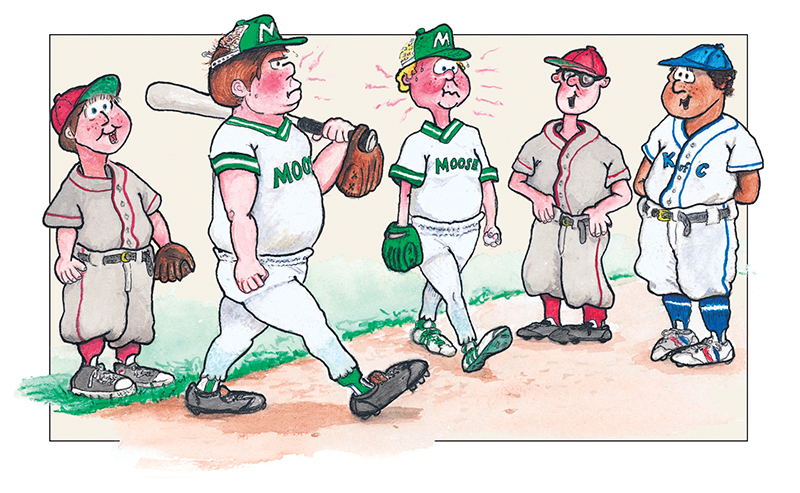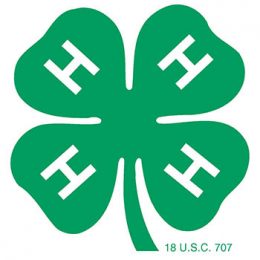(This column originally was printed in the June 1997 issue of Electric Consumer.)

To a kid growing up in small-town America in the early 1970s, the memories of summer were indelibly etched with the smells of cowhide, Topps bubble gum, freshly cut grass — and mothballs.
But it all started changing in my hometown the day Moose wore polyester PJs.
In the four baseball-filled summers of my youth, the day team uniforms were handed out ranked as one of the most wondrous days of the year.
Uniform Day made you feel a part of something. You were a team. And it tied you to something even bigger — the big Boys of Summer you watched every Saturday on “The Game of the Week.”
When I played, we still wore those traditional baggy flannel uniforms of our forefathers, or, at least, older brothers. The style was simple. They were either white or gray and trimmed with color braiding around the sleeves, around the neck, down the buttoned front and down the pants legs.
But along with these now truly nostalgic pieces of Americana came the pungent smell of mothballs. In the off season, team sponsors or coaches stored the uniforms in big corrugated boxes along with ample supplies of those white pellet repellents to curb the appetite of hungry moths or their offspring.
Washing after washing, the smell lingered in the uniforms throughout the hot sticky days of summer. The scent only finally began to wane as the weeks wore on. By the time the mothball smell was gone, so was the season. And so was the summer. It was always bittersweet to have to hand back the uniform at the post-season party which was always around Labor Day.
I don’t know why I developed such an affinity for baseball duds during those years. It must be because I was such a crummy player. I had a lot of time on the bench to consider the other nuances of the game, like uniform design and score book keeping.
In those long summer afternoons after practice and before games, I started a “fantasy” baseball league of my own. I created 24 mythical teams that sported rosters of nine mythical players. I played out the season on a baseball board game. A spinner determined the outcome of each at bat.
Along with keeping all the score sheets and standings from my make-believe league, I also designed both home and away uniforms for each team. I used major-league uniforms as inspiration and threw in some 11-year-old imagination (my San Diego Tacos wore sombreros, and the Shell Beach Sherlocks wore deerstalkers). I relied on my familiar Little League uniform for detail.
The uniforms I wore were cut from pure baseball tradition. My Little League uniform was gray with red trim. On the back in red felt letters was “CNB,” which stood for our team sponsor, Citizens National Bank. When I graduated to Pony League, my uniform became even more plain. It was just white flannel. But the name was something of a curiosity.
Our team was known as the “Barbershoppers” (though we couldn’t sing or play). But on the back of our shirts were the letters, “SPEBSQSA.” As rookies, my teammates and I thought we’d been given the wrong jerseys. The old-timers, the second year players, knew it stood for “Society for the Preservation and Encouragement of Barbershop Quartets Singing in America.” No wonder they used SPEBSQSA.
But the times, they were a-changin’ in baseball in the 1970s. And so were uniforms.
The early ’70s saw the advent of polyester knit in baseball. And with polyester came bright colors and sans-a-belt breeches! The Oakland A’s, winners of the World Series 1972-73-74, played in bright green and yellow pullover jerseys and white shoes. And soon everyone followed their example.
I guess it was only a matter of time until polyester came to my hometown. It happened my second year of Little League — 1974. The team sponsored by the local Moose Lodge was the first. It wasn’t as earth-shaking as when Hank Aaron hammered number 715 that same spring, but it was a day I haven’t forgotten yet.
The moment Moose first took the field in its new uniforms, a collective snicker rose from the opposing dugout and stands and fluttered around the ball park like moths in the overhead lights.
Those polyester uniforms were different, all right. They were white and tight. Gone were buttons and belt loops. The jerseys were pullovers, and the pants had elastic waistbands. Elastic! They looked like pajama bottoms! I don’t think the trousers even had a fly. Worse, yet: you could see through the thin fabric!
You couldn’t distinguish if the Moose players were wearing Hanes or Fruit of the Loom, but the outlines of their briefs showed through the polyester as a ghostly white. It was especially clear on the bigger guys whose pants fit a little more snug.
We all wondered how those guys could play knowing people could see their underwear. But, apparently, the adversity helped. As I recall, Moose either won the league that year or came mighty close.
Despite that immodest unveiling, within just a few seasons, as my playing days ended, polyester supplanted all the old uniforms. And mothballs.
The last Little League team to permanently mothball its flannels was a mom and pop department store. Just before it finally did, its players were probably taking more abuse in their old-fashioned and worn-out duds than Moose did that first season in polyester. I think the league finally told the store to either buy new uniforms, or it would find a new sponsor.
Polyester was stretchier, lighter weight, easier to care for and cheaper. Today, I see my nephew and all of these little ball players in polyester pants and T-shirts. Even baseball stockings today are just a white sock with a painted stripe. No more stirrups.
Alas, team sponsors today are more cost-conscious than tradition-minded. And baseball is game that thrives on its traditions. Uniforms, the sacred vestments of the game, are a part of that. To me, kids playing in these lackluster uniforms today is akin to the pope saying high Mass in a leisure suit. To me, it’s yet another reason interest in the game is declining.
Major-league teams that garishly greeted polyester in the 1970s with new styles and Crayola colors have retreated to more traditional designs. They’re still wearing polyester knit, but at least the uniforms look the way baseball uniforms oughta look. And no team wears sans-a-belt breeches anymore.
Maybe the retro-trend will also trickle down to our young players. It’s within them, and on them, where the love of the game starts. The love of baseball embraces not just fielding and hitting, but all the little traditions and details, too. I only hope these players will remember the uniforms we give them as fondly as I remember those uniforms our parents gave us.
In one of the greatest baseball movies of all time, “The Natural,” beleaguered baseball manager Wilford Brimley scratches the name of Roy Hobbs, his hospitalized star player, from the lineup before the final game to decide the 1939 pennant. Brimley laments to his assistant coach that he should have followed his parents’ wishes and been a farmer.
Suddenly appearing in the doorway, the rejuvenated star, Robert Redford, interjects that there’s nothing like a farm and the wheat. But, he tells Brimley his father wanted him to be a baseball player.
Brimley praises Redford’s talent, then tells him: “Suit up!” I get goosebumps every time I see it.
That scene rejuvenates me, makes me think of the days I suited up. Buttoning the jersey; tugging the stirrup way up and then doubling the top back down to the shin; pulling on the breeches and tucking the hem around the top of the stirrup; tightening the belt: these little pre-game rituals were done slowly and deliberately. I don’t know why I did them that way. I guess because I loved everything about baseball.
I tried hard to play it well. But no matter how hard I tried, I guess the only baseball instinct I truly possessed told me to savor those moments; my playing days were numbered.
Though my baseball career ended at age 14, I still love to wear baseball jerseys. My wife thinks I’m a nut to spend so much time and money on jerseys. But she not only tolerates my obsession, she has encouraged it. One Christmas she gave me a wool-blend replica of the 1969 New York Mets road jersey worn by my boyhood hero Tom Seaver. Another Christmas, it was an old-timey Mudville jersey.
I’ve designed my own and collected other jerseys over the years. My sister even hand-sewed one for me. Baseball jerseys get me waxing nostalgic for those summer days of cowhide, bubble gum and cut grass. And just catching a rare whiff of mothballs these days suits me up and sends me out into right field where I lived for a few innings 30 years ago.
Then, I thought mothballs only preserved the fabric of those wonderful uniforms. It amazes me, now, how well those mothballs preserved memories, too.
Text and illustration by Richard G. Biever, senior editor of Electric Consumer.



